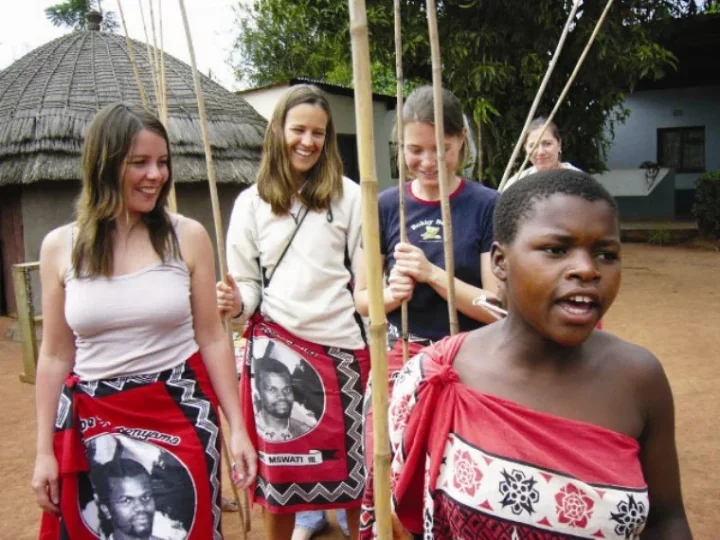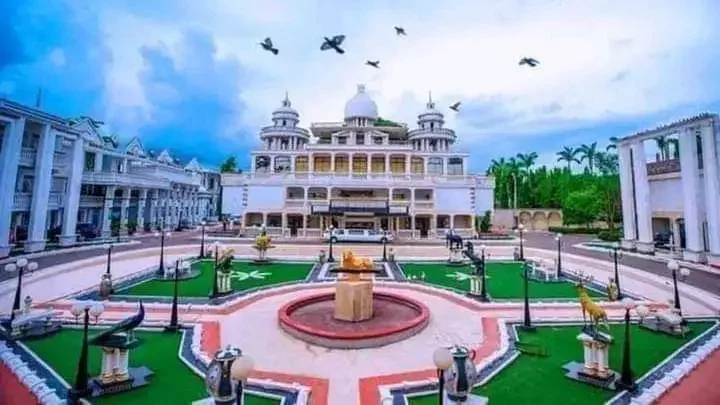
The African continent is a place where you can find a wide variety of different cultures. It has a long history that was influenced by colonialism, migration, and international relations. While most African countries have indigenous African populations, many have large white communities. This is especially true because of the continent's colonial past. The white populations in Africa are usually the descendants of European colonizers, settlers, or more recent migrants. In this article, we'll look at the top 10 African countries with the highest white population, shedding light on where these communities are found and how they contribute to their countries today.
Top 10 African Countries with the Highest White Population
1. South Africa
South Africa stands out as the African country with the largest white population, which remains a prominent part of the nation's social, economic, and political landscape. The white population in South Africa, comprising primarily Dutch (Afrikaners), British, and other European groups, was historically central to the country's colonial and apartheid systems. Although the white population has declined since the end of apartheid in 1994, they still make up around 8% of the total population. White South Africans are mostly concentrated in urban centers such as Cape Town, Johannesburg, and Pretoria, and they continue to dominate sectors like business, agriculture, and education. Which African country has the most white population? It is South Africa, by a significant margin.
2. Namibia
Namibia, a former German colony, has a notable white population, primarily of German descent. The country's white community represents around 6% of the total population, making it one of the top African countries with a substantial white presence. White Namibians were historically involved in the country's agriculture and mining industries, and they continue to play an important role in the economy, particularly in the farming sector. Despite Namibia's independence in 1990, the white population remains a key group in the nation's economic life, particularly in the capital, Windhoek.
3. Zimbabwe
Once known as Rhodesia, Zimbabwe has a long history of European settlement, particularly from British immigrants. The white population in Zimbabwe, once around 5% before the country's independence in 1980, has decreased significantly since the controversial land reform programs in the early 2000s. The white population today makes up around 1-2% of the total population. Many white Zimbabweans are still involved in the country's agricultural sector, despite the challenges of land redistribution. Despite their reduced numbers, they continue to influence the country's business landscape.
4. Kenya
Kenya has a smaller white population compared to South Africa and Namibia, but it still has a notable community, mainly of British descent. Kenya was a British colony from the late 19th century until its independence in 1963, and the legacy of British settlement can still be seen in parts of the country. The white population today forms a small but significant part of the population, largely residing in Nairobi and the fertile highlands. White Kenyans are often involved in agriculture, tourism, and business. Their influence is also evident in sectors such as education and diplomacy.
5. Botswana
Botswana, known for its stability and strong economy, has a white population that is around 2% of the total population. Much of Botswana's white community is of South African and British origin. The country's diamond mining industry, which is one of the world's largest, has attracted many white expatriates who play a significant role in the industry's operations. While the white population is relatively small, they remain an important part of the country's business community, particularly in sectors related to mining and commerce.
6. Mozambique
Mozambique, a former Portuguese colony, has a much smaller white population today compared to other African nations. However, there is still a community of Portuguese-descended Mozambicans who live in the country, particularly in the capital city, Maputo. The white population in Mozambique plays a key role in the country's business and agricultural sectors, although they represent only a tiny fraction of the overall population. Following independence from Portugal in 1975, many Portuguese settlers left, but some chose to remain and continue to contribute to the nation's economy.
7. Angola
Angola, like Mozambique, was a former Portuguese colony, and its white population is primarily of Portuguese origin. The white population in Angola is small but still influential, particularly in the oil and construction industries. Angola's post-independence civil war and the eventual economic boom fueled by oil exports have led to a growing expatriate population, including Portuguese nationals and other Europeans. Although the white population in Angola is a small percentage of the total population, they remain central to the country's economic recovery and growth.
8. Eswatini
Eswatini, previously known as Swaziland, has a relatively small white population, which includes European settlers and business people from South Africa and Britain. The white community in Eswatini is mainly involved in agriculture, particularly in the production of sugar, and commerce. They are primarily located in the country's urban areas and contribute to the nation's economy. Although the white population in Eswatini is not as large as in some other African countries, they remain an important part of the country's economic fabric.
9. Gabon
Gabon, located in Central Africa, has a modest white population, mainly consisting of French nationals. The white population in Gabon is involved in business and industry, with many working in the country's lucrative oil sector. Gabon's white expatriates often hold positions in the energy and resources sectors and contribute to the development of the country's infrastructure. Although the white community in Gabon is small, their economic influence, especially in the oil industry, is significant.
10. Rwanda
Rwanda has a smaller white population than many other African nations, but it does have a modest community of expatriates, particularly those from Europe. White residents in Rwanda are often involved in development work, international organizations, and businesses. Rwanda's recent focus on becoming a hub for technology, tourism, and international conferences has drawn an increasing number of foreign nationals, including Europeans. The white population in Rwanda is largely made up of professionals and aid workers, and they continue to play a significant role in the country's economic and social development.
Conclusion:
As a conclusion, the history of European colonialism and migration is reflected in the top 10 African countries with the highest white population. Despite the independence movements of the 20th century, there has been a marked decrease in the white population. In which country is the white population highest? While South Africa leads the list by a considerable margin, there are still significant white populations in several other countries, including Namibia, Zimbabwe, and Kenya.

















Comments